Log1+x Taylor Series

Index Power Series Tables
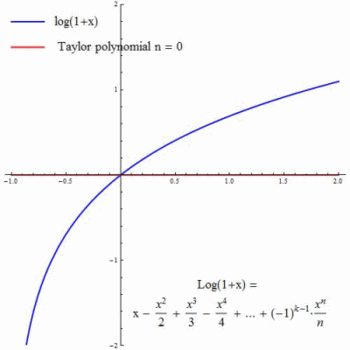
Q Tbn 3aand9gcrvq4n8spy0wjpphatpqtk03veinc7rsftbbg Usqp Cau

Q Tbn 3aand9gcrkjw64ul2tgb2hw Wknvb9va5ivji2nfszfa Usqp Cau

Elements Of The Differential And Integral Calculus Chapter Xviii Wikisource The Free Online Library
Q Tbn 3aand9gcqhsqudeodhcaoqaod4 Olimsxzqrk5xb2ok 91wui0kjggwboa Usqp Cau

Taylor Series Wikipedia
(x − a) 2 + f (3) (a) 3!.
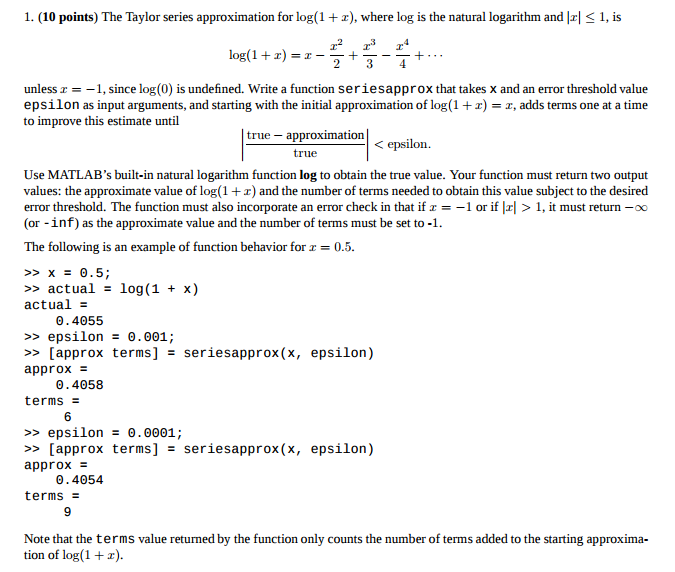
Log1+x taylor series. Get the free "Log(1-x) Taylor Series" widget for your website, blog, Wordpress, Blogger, or iGoogle. The second degree approximation is a parabola shown in green:. At a = 0 a = 0 a = 0, what is the Taylor series expansion of.
I will be expanding around 0, so it will be a Maclaurin series. This will work for a much wider variety of function than the method discussed in the previous section at the expense of some often unpleasant work. Taylor polynomials look a little ugly, but if you break them down into small steps, it.
A Taylor series approximation uses a Taylor series to represent a number as a polynomial that has a very similar value to the number in a neighborhood around a specified x x x value:. Expansion of log e (1 + x) if |x|<1 then Replacing x by −x in the logarithmic series, we get. Some Important results from logarithmic series (2) The series expansion of log e (1 + x) may fail to be valid, if |x| is not.
For math, science, nutrition, history. (See why we want to do this in the Introduction.). Enter a, the centre of the Series and f(x), the function.
The result 7.0 is the same as the result we calculated when we wrote out each term of the Taylor Series individually. F (x)=\log (1+x) , that is. (x − a) + f ′ ′ (a) 2!.
We can expand $\ln\Omega(E-E_v)$ in the Taylor series $$\ln\Omega(E-E_v) = \ln\Omega(E). Taylor computes the Taylor series approximation with the order n - 1. Find the Taylor series expansions at x = 1 for these functions.
Students, teachers, parents, and everyone can find solutions to their math problems instantly. Differentiating it again simply increases the power as you can see. = X1 n=0 xn n!.
E(17x) = P 1 n=0 (17 x)n!. To specify a different expansion point, use 'ExpansionPoint':. Deriving the Maclaurin expansion series for ln(1+x) is very easy, as you just need to find the derivatives and plug them into the general formula.
1(x) = f(a) + f0(a)(x a) is the tangent line to f at a, the remainder R 1(x) is the difference between f(x) and the tangent line approximation of f. Just think of x as r = X1 n=0 xn x 2( 1;1) ex = 1 + x + x2 2!. If we want a good approximation to the function in the region near `x = a`, we need to find the first, second, third (and so on) derivatives of the function.
Let’s start with the general definition of the Taylor series expansion :. For log_e(1 + x) and log_e(1 -x). If we increase the number of times the for loop runs, we increase the number of terms in the Taylor Series expansion.
Free math lessons and math homework help from basic math to algebra, geometry and beyond. (When the center is , the Taylor series is also often called the McLaurin series of the function.). Taylor Series on Brilliant, the largest community of math and science problem solvers.
\log (1+x)=\displaystyle\sum_ {n=1}^ {\infty} (-1)^ {n-1}\dfrac {x^n} {n}. Expansions Which Have Logarithm-Based Equivalents. An advantage of using a for loop is that we can easily increase the number of terms.
At right is a picture of ln(1 + x) and some of its Taylor polynomials around 0. By integrating the above Maclaurin series, we find the Maclaurin series for ln(1 − x), where ln denotes the natural logarithm:. Free Taylor/Maclaurin Series calculator - Find the Taylor/Maclaurin series representation of functions step-by-step This website uses cookies to ensure you get the best experience.
Series expansions of exponential and some logarithms functions. The Taylor Series for e x. Commonly Used Taylor Series series when is valid/true 1 1 x = 1 + x + x2 + x3 + x4 + :::.
I’ve already described how Herbie computes series expansions to produce polynomial approximations to floating-point programs. As you can see ln1 = 0. + x8 8.
The default expansion point is 0. James Gregory)가 발견했고, 1715년에 영국의 수학자 브룩 테일러(영어:. Let's start by taking some derivatives and see what values they.
We also derive some well known formulas for Taylor series of e^x , cos(x) and sin(x) around x=0. TAYLOR’S THEOREM Example 1. Log in with Facebook Log in with Google Log in with email Join.
Then, the series will converge for the values of x within the interval of convergence. Logarithms of Taylor Expansions. Taylor polynomials can be used to approximate a function around any value for a differentiable function.In other words, when you use a Taylor series, you assume that you can find derivatives for your function.
Taylor Series A Taylor Series is an expansion of some function into an infinite sum of terms , where each term has a larger exponent like x, x 2 , x 3 , etc. Note this is the geometric series. = X1 n=0 17n n n!.
The graph of y = 1+ 1 x looks smooth at x = 1, but there is still a problem. The Taylor theorem expresses a function in the form of the sum of infinite terms. Learn more about taylor, function, log(x), homework.
If we write a function as a power series with center , we call the power series the Taylor series of the function with center. In Mathematics, the Taylor series is the most famous series that is utilized in several mathematical as well as practical problems. How can you find the taylor expansion of #ln(1-x)# about x=0?.
Calculus Power Series Constructing a Taylor Series. F(x)=sum_(n=0)^oof^n(0)/(n!)x^n This means we need to work out the nth derivative of ln(1+x). Of course you can.
Let's say we wanted a Taylor series approximation for ln(1 + x) about a = 2. Many functions can be written as a power series. Taylor Series Calculator with Steps Taylor Series, Laurent Series, Maclaurin Series.
These terms are determined from the derivative of a given function for a particular point. It's pitched at undergraduate level and. > The Taylor series of a real or complex-valued function math{\displaystyle f(x)}/math that is infinitely differentiable at a real or complex number math{\displaystyle.
Actually, just to give ourselves some closure here, let's write it in sigma notation. Taylor series expansions of logarithmic functions and the combinations of logarithmic functions and trigonometric, inverse trigonometric, hyperbolic, and inverse hyperbolic functions. The standard definition of an algebraic function is provided using an algebraic equation.
1 (1 − x) 2?. Recognizing function from Taylor series. Taylor series of log(x) with a = 1.
Our aim is to find a polynomial that gives us a good approximation to some function. You can almost never find the exact value of R n(x). Graph of \ln{(x+1)} is shown in red.
If you want to calculate log(1.9) and x=0.9 then you have apply taylor series log(1+x) see formula form google and change in to the code is. Syms x taylor(log(x), x, 'ExpansionPoint', 1) ans = x - (x - 1)^2/2 + (x - 1)^3/3 - (x - 1)^4/4 + (x - 1)^5/5 - 1. The general formula for a Maclaurin series is:.
Series Expansion of Exponential and Logarithmic Functions. And the corresponding Taylor series for log(x) at a = 1 is and more generally, the corresponding Taylor series for log(x) at some is:. Let's try 10 terms.
In this video I continue with my series of tutorial videos on Thermal Physics and Thermodynamics. There, I described how expansions of exponentials and the trigonometric functions worked, but I didn’t have a way to expand logarithms and thus powers. Consider the function of the form \f\left( x \right).
F (x) = f (a) + f ′ (a) 1!. Nowadays, more formally, one can prove that the harmonic series truncated at N is close to the logarithm of N, when N is large, with the difference converging to the Euler–Mascheroni constant. 테일러 급수의 개념은 스코틀랜드의 수학자 제임스 그레고리(영어:.
E = 1 + 1 + 1 2!. The truncation order n is the exponent in the O-term:. 0인 지점에서의 테일러 급수를 특별히 매클로린 급수(Maclaurin series)라 하는데, 18세기에.
The archetypical example is provided by the geometric series:. We could write the natural log of one plus x to. In this section we will discuss how to find the Taylor/Maclaurin Series for a function.
Compute answers using Wolfram's breakthrough technology & knowledgebase, relied on by millions of students & professionals. For the first degree approximation we get:. Which is valid for -1<x<1.
\displaystyle\sum_ {n=1}^ {\infty} (-1)^ {n-1}\dfrac {x^n} {n}. Truncation order of Taylor series expansion, specified as a positive integer or a symbolic positive integer. Stack Exchange Network Stack Exchange network consists of 176 Q&A communities including Stack Overflow , the largest, most trusted online community for developers to learn, share their knowledge, and build their careers.
Now includes 10. An expansion for log e (1 + x) as a series of powers of x which is valid only, when |x|<1. This is a straight line going through the origin, shown in pink.
By using this website, you agree to our Cookie Policy. Learn to find the series expansion of log(1+x) and log(1-x) here. Brook Taylor)가 공식적으로 발표했다.
Compute the Taylor series, around x = 0. Hence obtain a Taylor series for f(x) = log_e \frac{1. He states the following:.
The left-hand point is -1, and. The Taylor series for the exponential function ex at a = 0 is. Note how the line for i in range(10):.
If you put in 1, it looks like it would converge. Natural log of one plus x to the third power is x to the third power minus x to the sixth over two plus x to the ninth over three, so on and on and on. By integrating the above Maclaurin series we find the Maclaurin series for log(1 − x), where log denotes the natural logarithm:.
In this tutorial we shall derive the series expansion of the trigonometric function $${a^x}$$ by using Maclaurin's series expansion function. If you put in −1 for x the series diverges. Instead of deriving this from the formula for the geometric series we could also have computed it using Taylor’s formula.
X 2R cosx = 1 x2 2!. But using that method you only obtain the Taylor series of. So the Taylor series for 1 / x at a = 1 is − (−) + (−) − (−) + ⋯.
If you knew the value exactly, then you would know the precise value of f(x) (since it’s easy to compute T. Convergent when |x|<1 We start by working out a taylor series for ln(1+x). Log(1+x) f(x) = log(1+x) f (x)= 1 1+x f (x)= −1 (1+x)2 f (x)= 2 (1+x)3 f(4)(x)= −2.3 (1+x)4 f(0) = 0 f (0) = 1 f (0) = −1 f (0) = 2 f(4)(0) = −6 It follows that, for |x| < 1—which is the necessary and sufficient condition for the convergence of the series—we have log(1+x)=x− x2 2 + x3 3 − x4 4.
Expansion of logarithmic series.
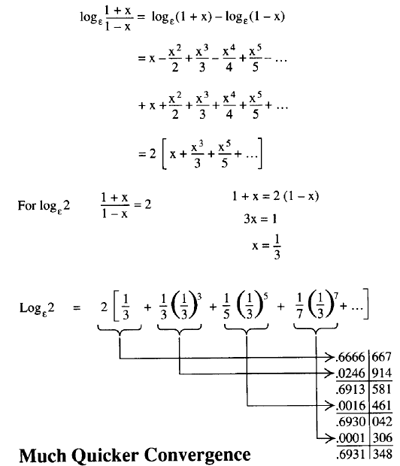
Logarithms Logs Log Ln Lg
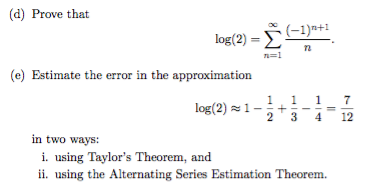
Solved A Prove That The Taylor Series Of The Function F Chegg Com
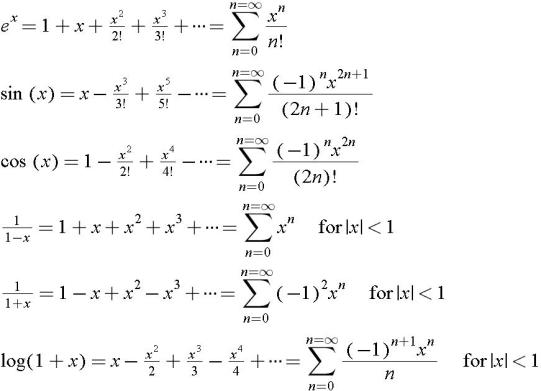
Appendix C Expansions Differentiation Integrals And Mathematical Relations Engineering360

Problem 3 I Show That The Taylor Series Expansion Of The Function With Center At 1 Is For 1 Homeworklib
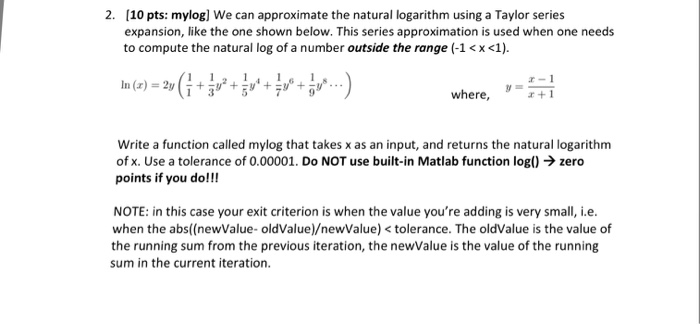
Solved We Can Approximate The Natural Logarithm Using A T Chegg Com

Implementing Taylor Series For Sine And Cosine In C Stack Overflow
Http Academic Uprm Edu Wrolke Esma6661 Hyp1 Html

Taylor Series Wikipedia

Taylor Series Wikipedia

Taylor Series Numerical Methods Projects
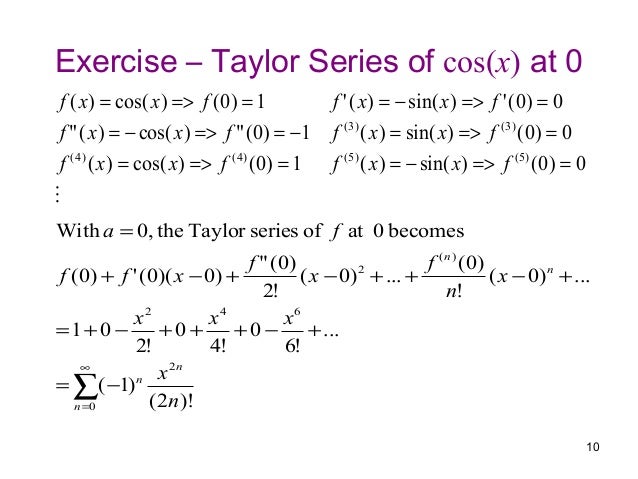
03 Truncation Errors

Logarithms Logs Log Ln Lg
Http Edshare Soton Ac Uk Id Document 5997
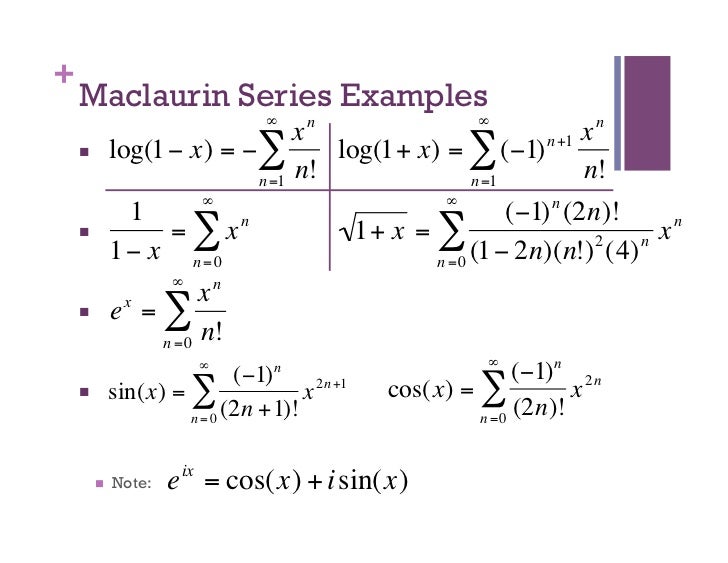
Taylor Series

Expand Logex In Power Of X And Hence Evaluate Loge 1 1 Correct To Four Decimal Places Answer Mathematics 1 Question Answer Collection

Taylor Series Expansion Of Natural Log Function Youtube

Natural Logarithm Wikipedia

Natural Logarithm Series
How Do You Do The Taylor Expansion For F X Log X 1 At X 0 Socratic
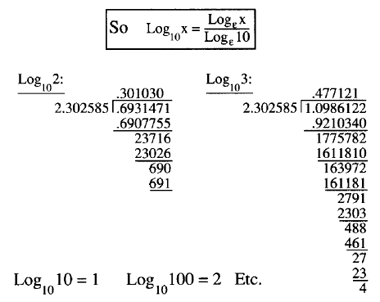
Logarithms Logs Log Ln Lg
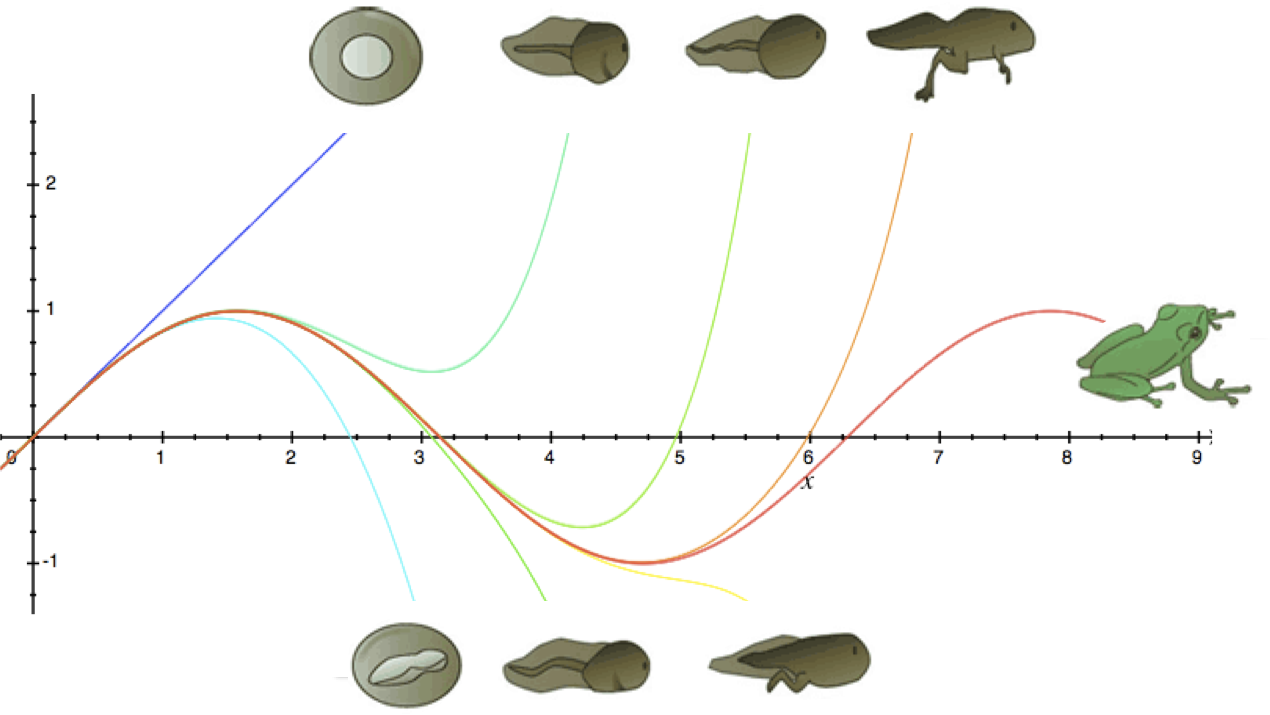
Intuition For Taylor Series Dna Analogy Betterexplained
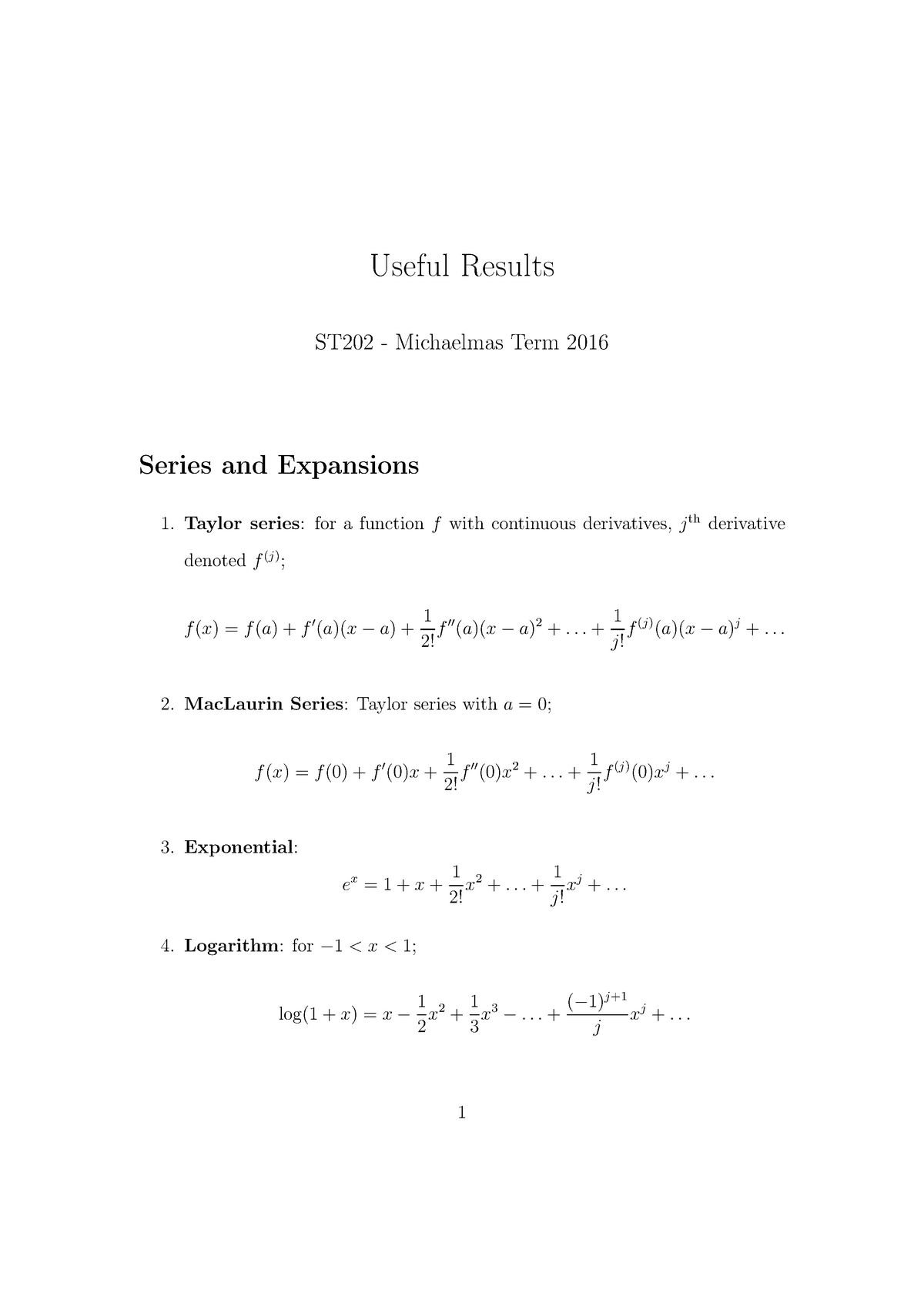
Useful Results Calculus St2 London School Of Economics Studocu
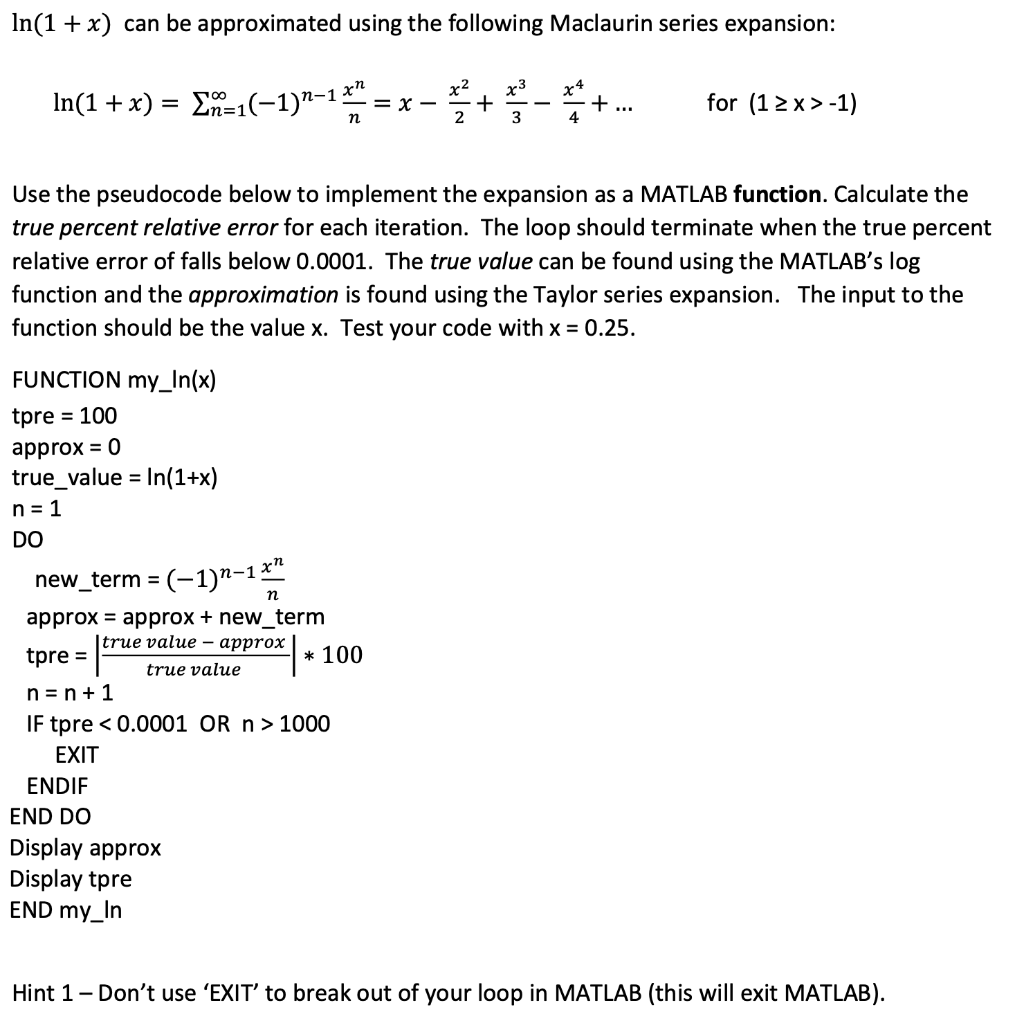
Solved In 1x Can Be Approximated Using The Following Mac Chegg Com

Analysis Webnotes Chapter 07 Class 46
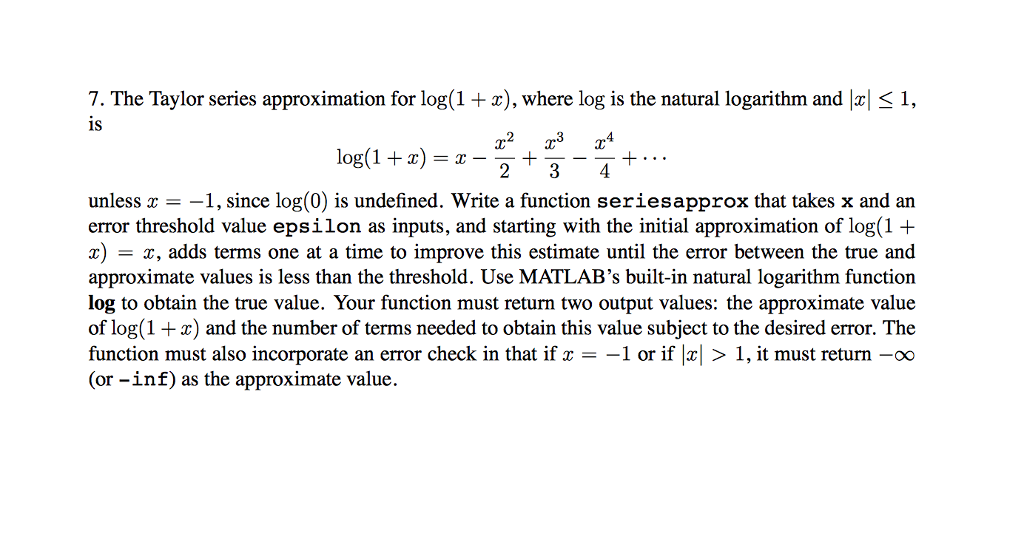
Solved 7 The Taylor Series Approximation For Log 1 Z Chegg Com
The Beginner Programmer Taylor Series With Python And Sympy Revised

Solved A Calculate The First Three Terms Of The Taylor Chegg Com
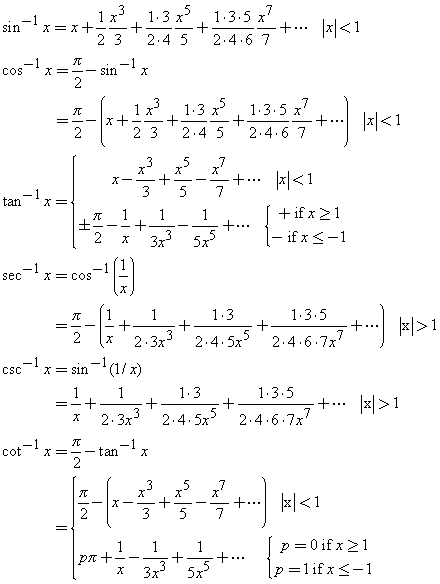
Taylor Series Expansions Of Inverse Trigonometric Functions

Some Wolfram Alpha Features I Can T Achieve In Mathematica Mathematica Stack Exchange

Taylor Series

Taylor Series Wikipedia
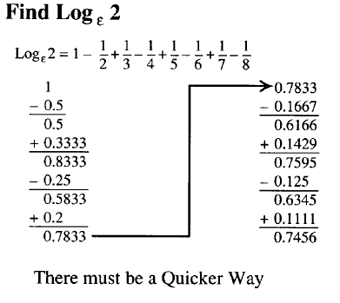
Logarithms Logs Log Ln Lg
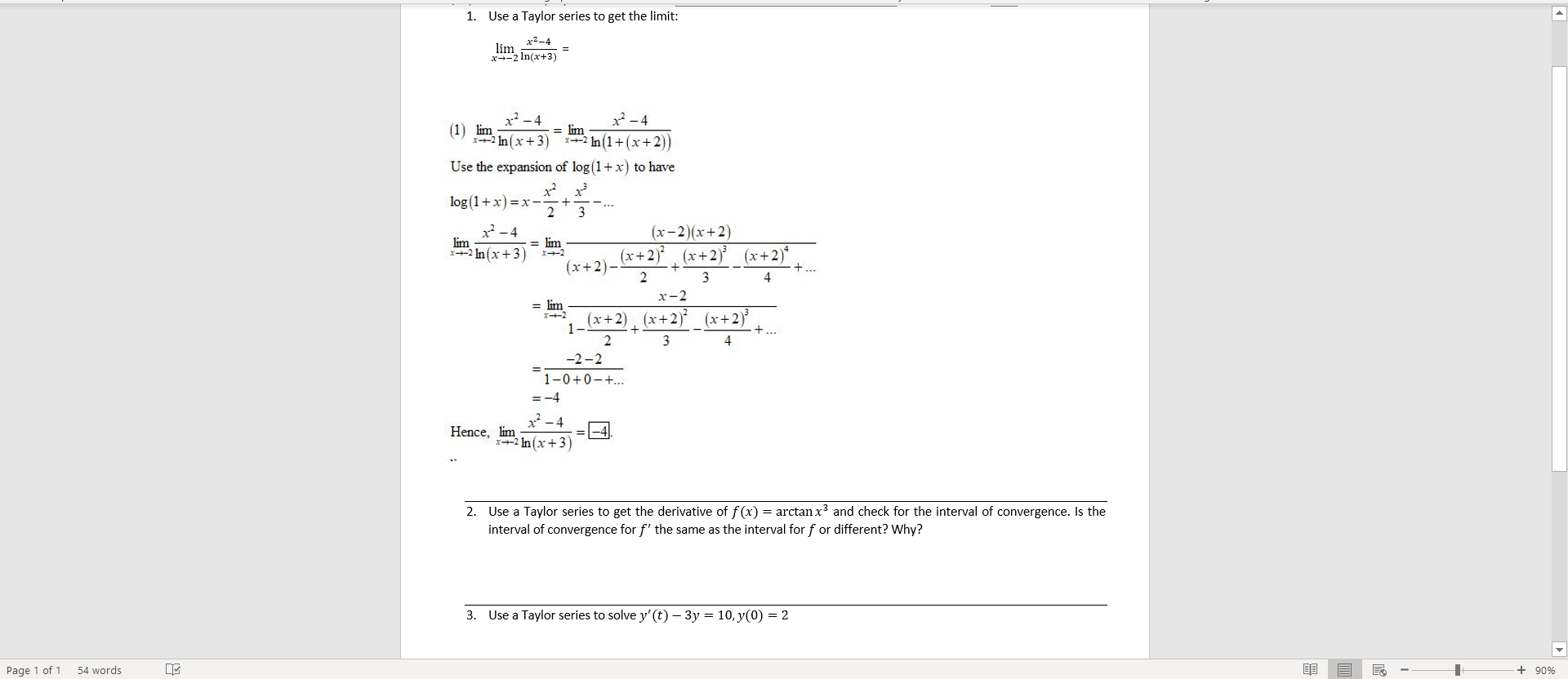
Solved 1 Use A Taylor Series To Get The Limit 7 4 X2 Chegg Com

Natural Logarithm Wikipedia
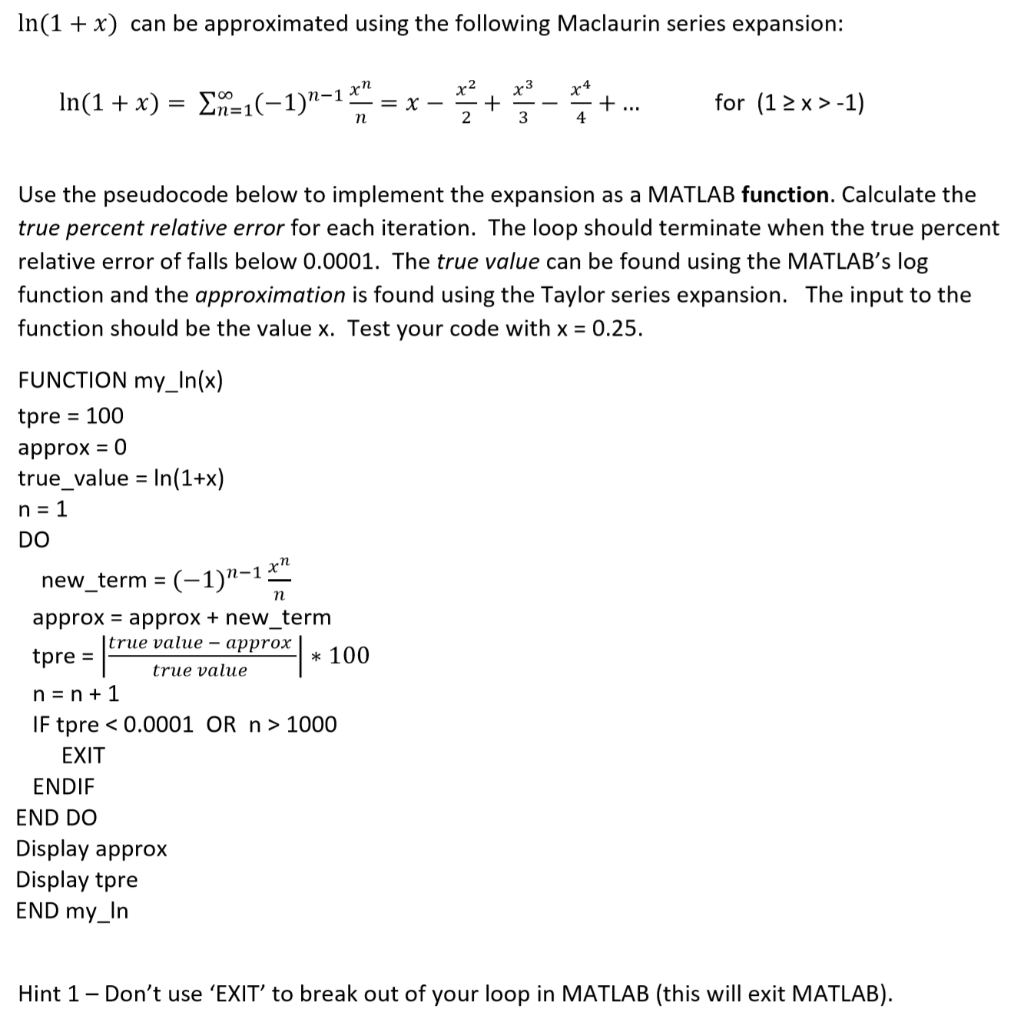
Solved In 1 X Can Be Approximated Using The Following Chegg Com

Help With Arithmetic On Basic Taylor Series Expansion Mathematics Stack Exchange
What Is The Expansion Of Log 1 X Quora

Making Animation The Convergence Of The A Taylor Series Of Log 1 X Youtube
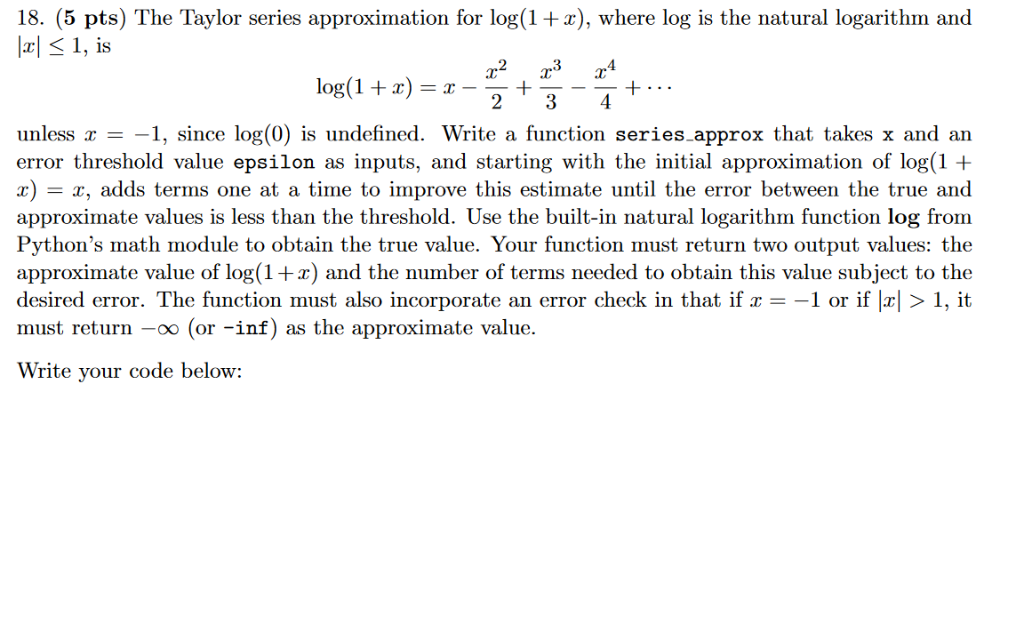
Solved 18 5 Pts The Taylor Series Approximation For Lo Chegg Com

Show That Frac 1 2 0 5 Frac 1 Frac 1 2 3 0 5 2 Frac 1 Frac 1 2 Frac 1 3 4 0 5 3 Cdots Log 2 2 Mathematics Stack Exchange

Taylor Series Wikipedia

Find The Taylor Series Expansion For F X Cos X At X Pi 4 Youtube
Q Tbn 3aand9gcskxb6gvgapdft5ibnrins2t92z0suwezny Nudtzbvqw8wmwu8 Usqp Cau

How Are Logs Calculated Quora

C Practical And Assignment Programs E X Series Expansion Youtube
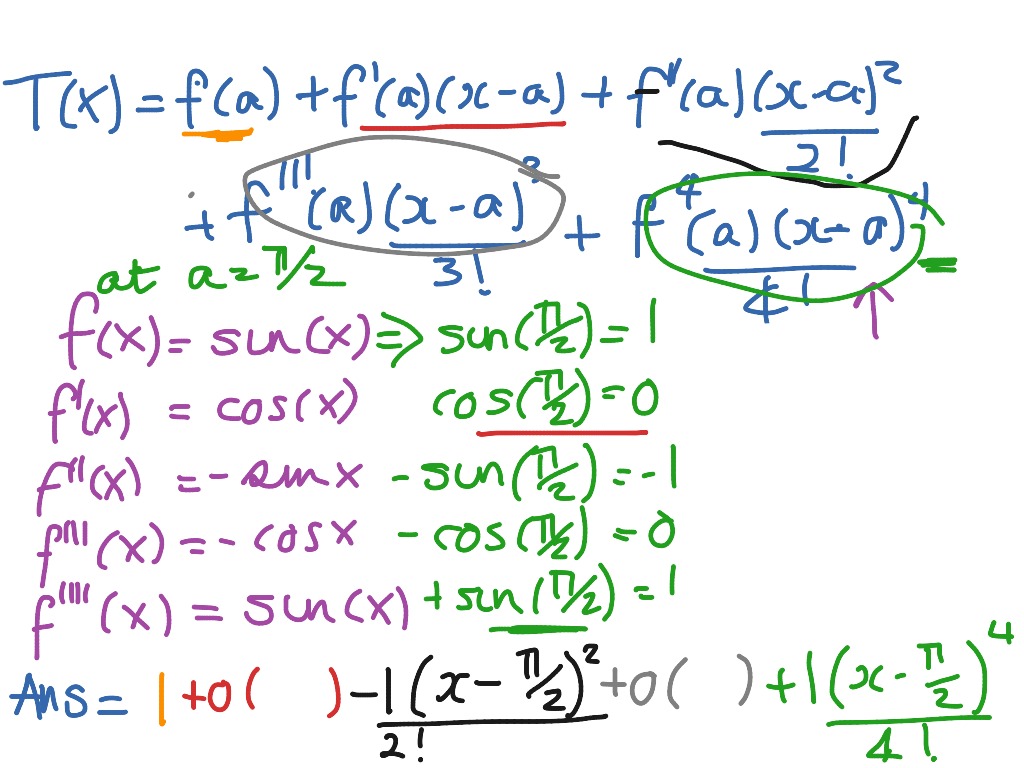
Taylor Series Of Sin X At Pi 2 Math Calculus Taylor Series Showme
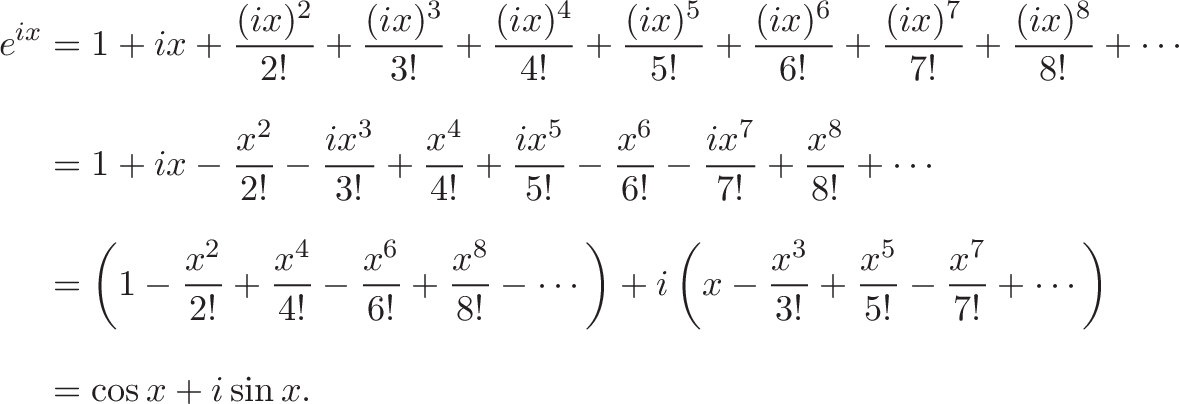
Intuition For Taylor Series Dna Analogy Betterexplained
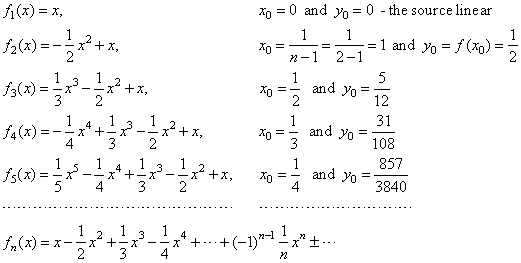
Maclaurin And Taylor Series Power Series Expansion Of Logarithmic Function
Taylor Series

Taylor Series Wikipedia

Taylor Series Expansions Of Hyperbolic Functions

The Natural Logarithm And Its Series Expansion 2 Ways Ln X 1 At 0 Youtube

Taylor Series
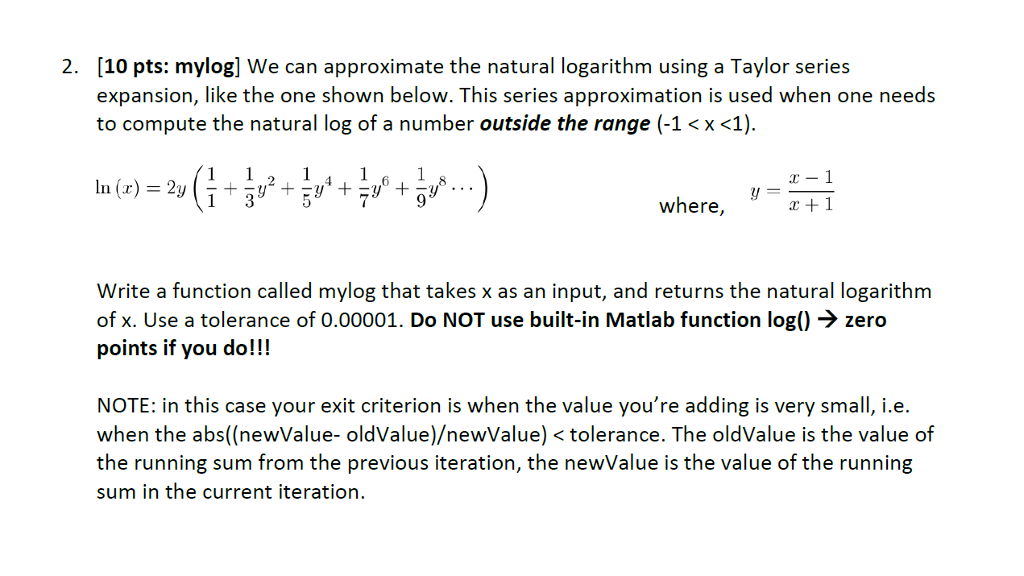
Solved We Can Approximate The Natural Logarithm Using A T Chegg Com
2

Taylor Series Wikipedia

Natural Logarithm Wikipedia

Natural Logarithm Series

Taylor Series In Numerical Differentiation Mathematics Stack Exchange

Taylor Series Wikipedia

Solved 1 10 Points The Taylor Series Approximation For Chegg Com

The First 4 Terms Of The Maclaurin Series For Frac X Sin X Mathematics Stack Exchange

Taylor Series Wikipedia
Find The Taylor Polynomial Of Log 1 X 1 X 1 2 Stumbling Robot
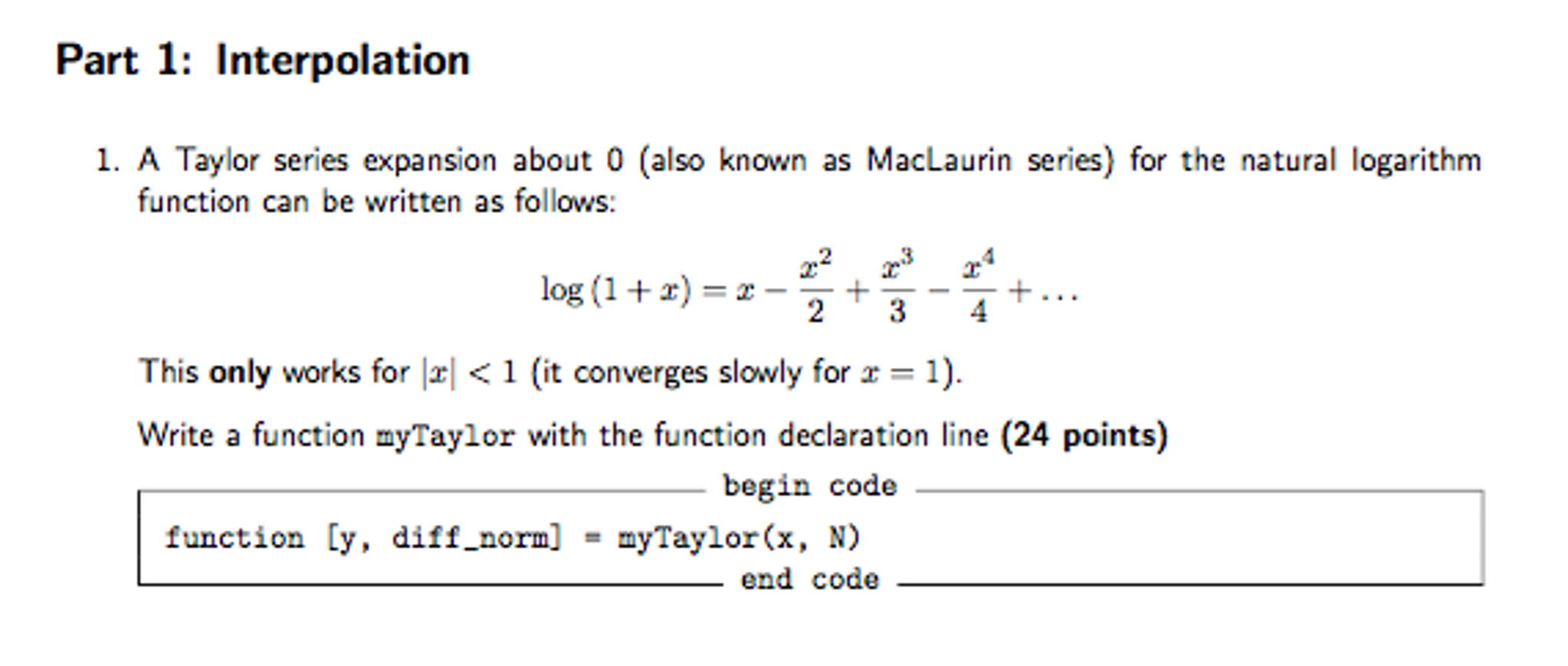
Solved Matlab Problem A Taylor Series Expansion About 0 Chegg Com
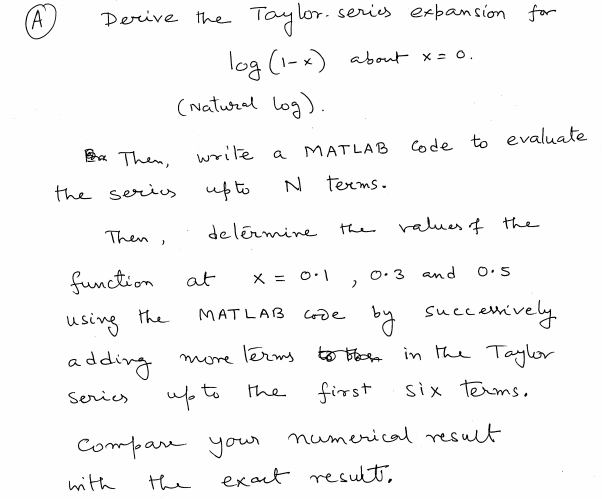
Solved Derive The Tylor Series Expansion For Log 1 X Chegg Com

Taylor Series Expansions Of Logarimathic Functions
Q Tbn 3aand9gctsgw9vft4mnh Bijnjv0lau9ncbgfjor ujy9dpdwsb5rxwi Usqp Cau
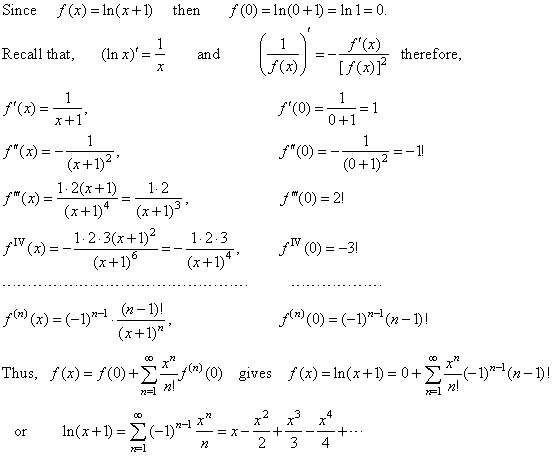
Maclaurin And Taylor Series Power Series Expansion Of Logarithmic Function

Taylor Series From Wolfram Mathworld

Taylor Series From Wolfram Mathworld

The Maclaurin Expansion Of Cos X The Infinite Series Module
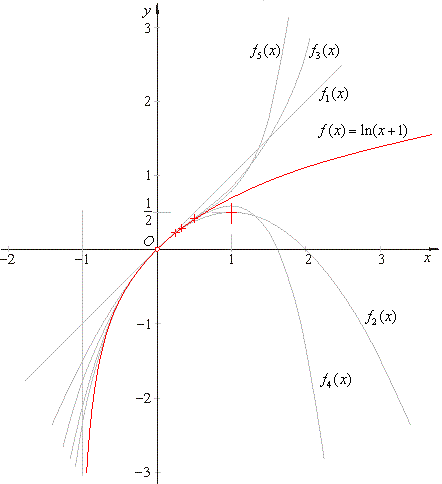
Maclaurin And Taylor Series Power Series Expansion Of Logarithmic Function
Expand Log X In Powers Of X 1 By Taylor S Series Sarthaks Econnect Largest Online Education Community
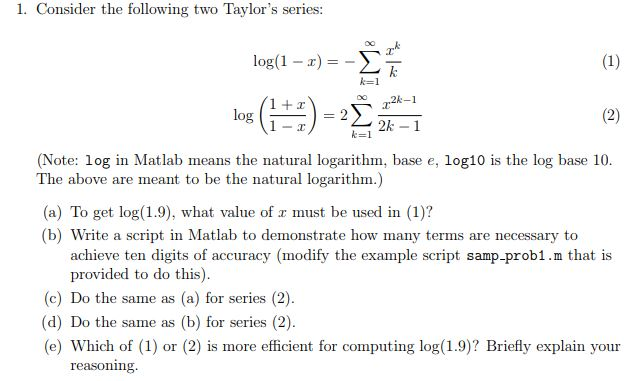
Solved 1 Consider The Following Two Taylor S Series Log Chegg Com

What Is The Correct Radius Of Convergence For Ln 1 X Mathematics Stack Exchange
Taylor Series For Log X Physics Forums

Taylor Series For F X Ln X Centered At X 1 Youtube
Write Down The Taylor Series Expansion Of The Function Log X About X 1 Upto Three Non Zero Terms For X 0 Sarthaks Econnect Largest Online Education Community
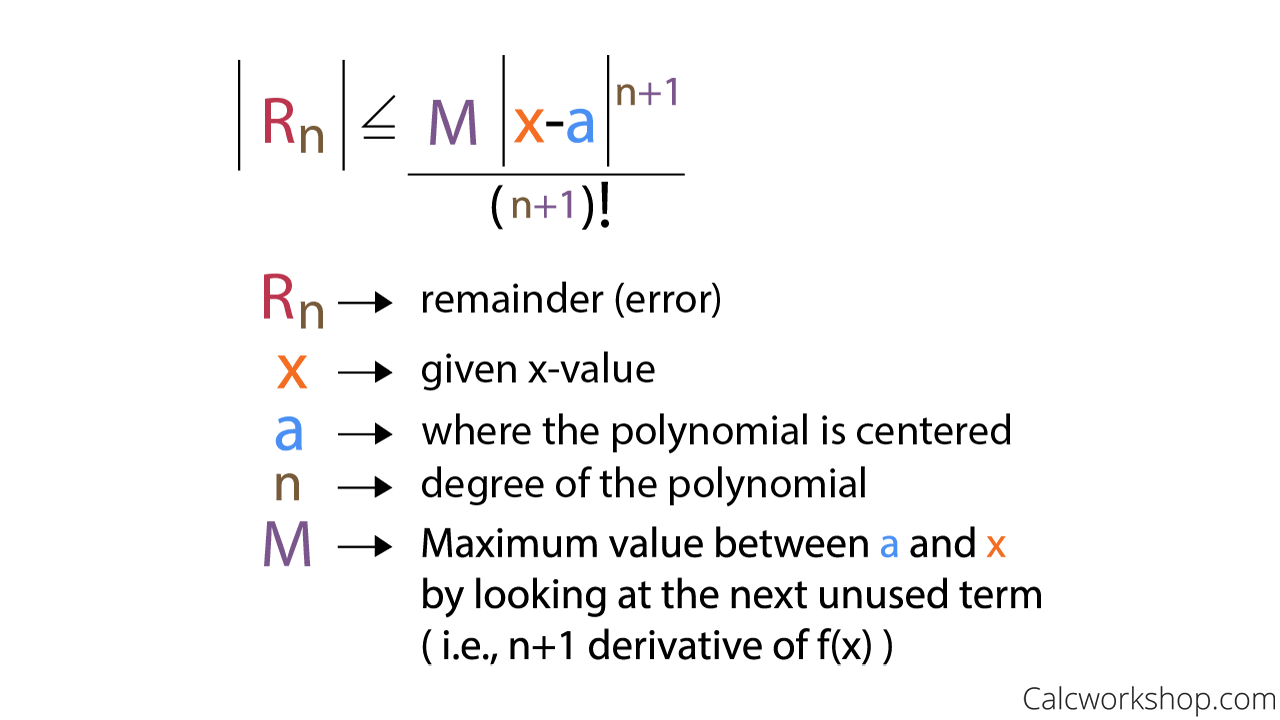
What Is Lagrange Error Bound Explained W 9 Examples

Natural Logarithm Wikipedia
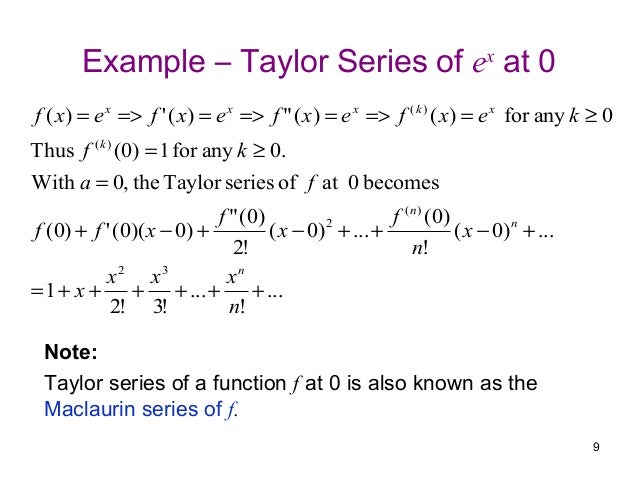
03 Truncation Errors
Taylor And Maclaurin Series

Maclaurin Series For Ln 1 X Youtube
1

Maclaurin Expansion For 1 Sqrt X 2 9 Mathematics Stack Exchange
Edumatth Weebly Com Uploads 1 3 1 9 Taylor Series Pdf
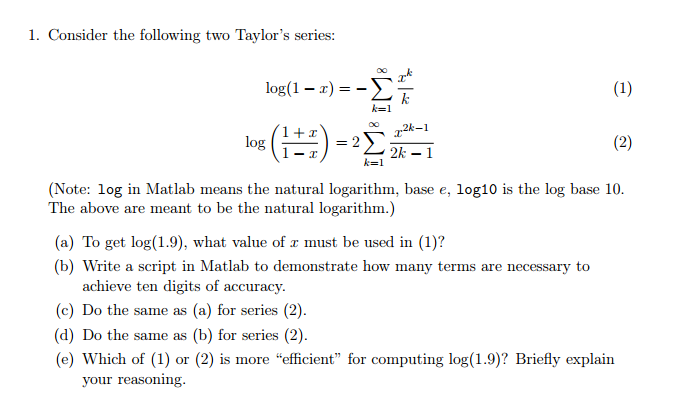
Consider The Following Two Taylor S Series Log 1 Chegg Com

What Is The Integration Of E X Logx Quora

Taylor Series Expansions Of Exponential Functions
2 Maclaurin Series

Math Test 1 Flashcards Quizlet

Expand 1 Dim Vector By Using Taylor Series Of Log 1 E X In Python Stack Overflow
Http Www Math Uiuc Edu Fboca Hw9 446 Pdf

Taylor Series Wikipedia

Solved 2 A 10 Points Obtain Taylor S Series For The Chegg Com
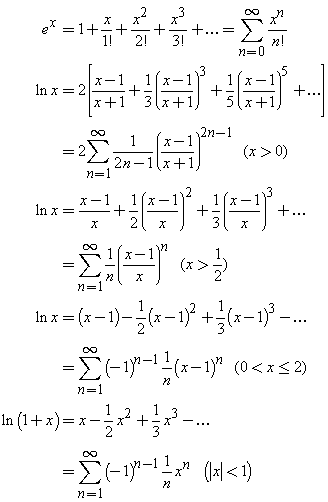
Series Expansions Of Exponential And Logarithmic Functions
Find The Taylor Polynomial Of Log 1 X 1 X 1 2 Stumbling Robot



